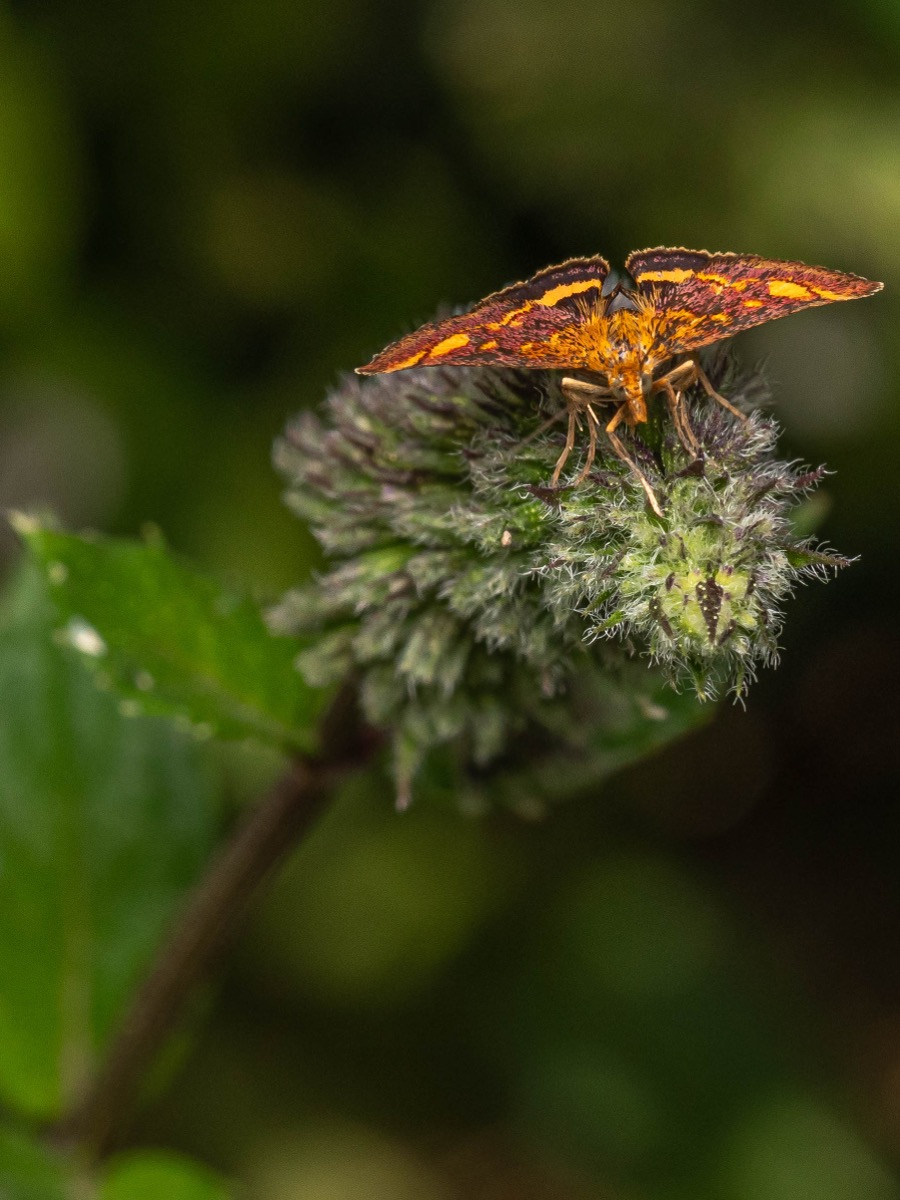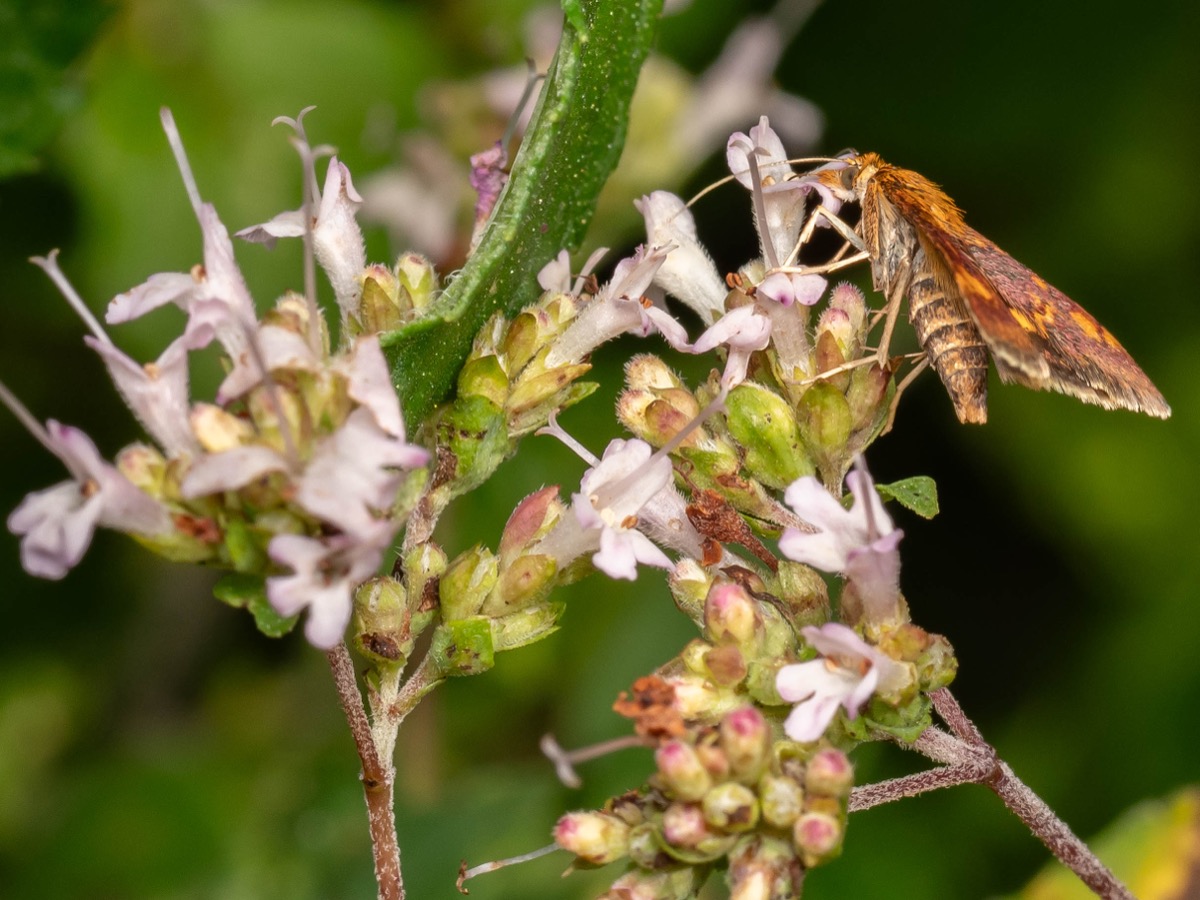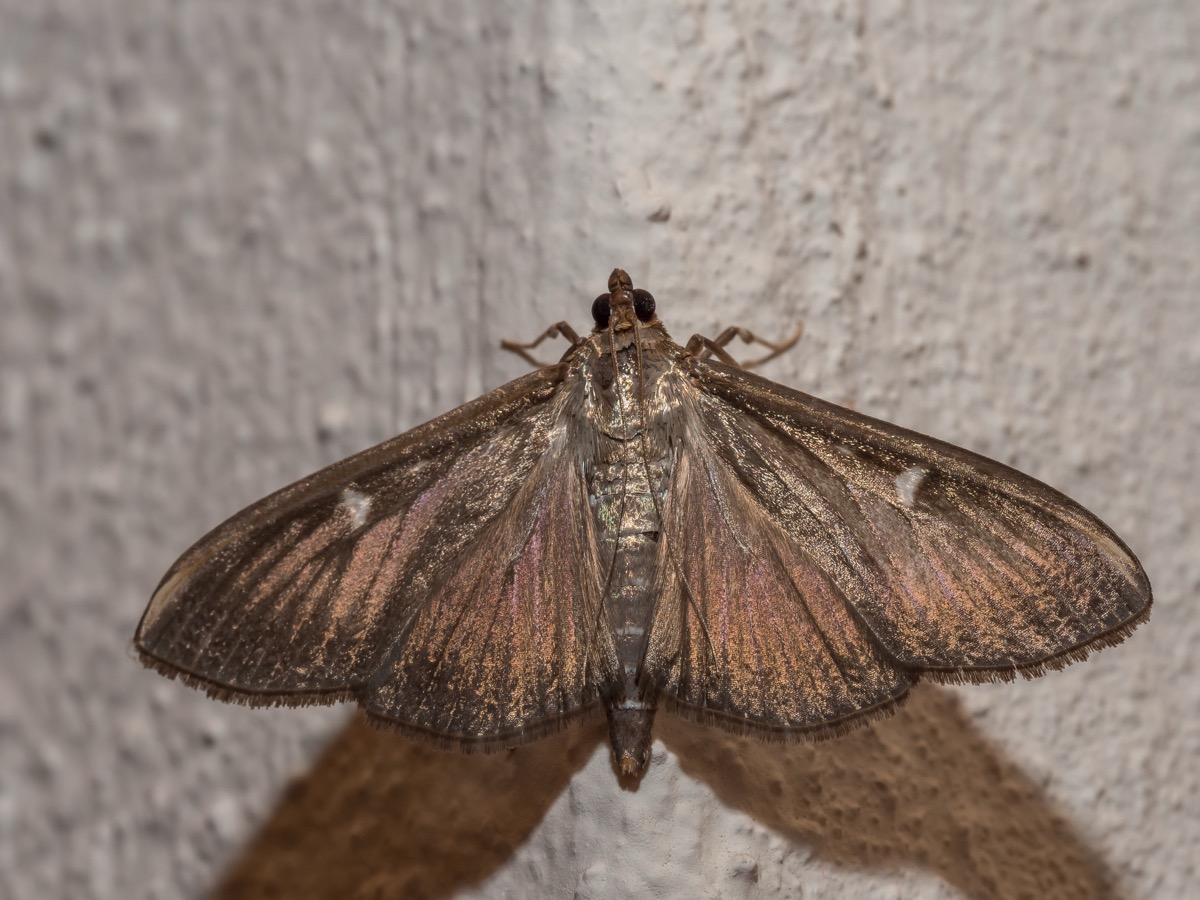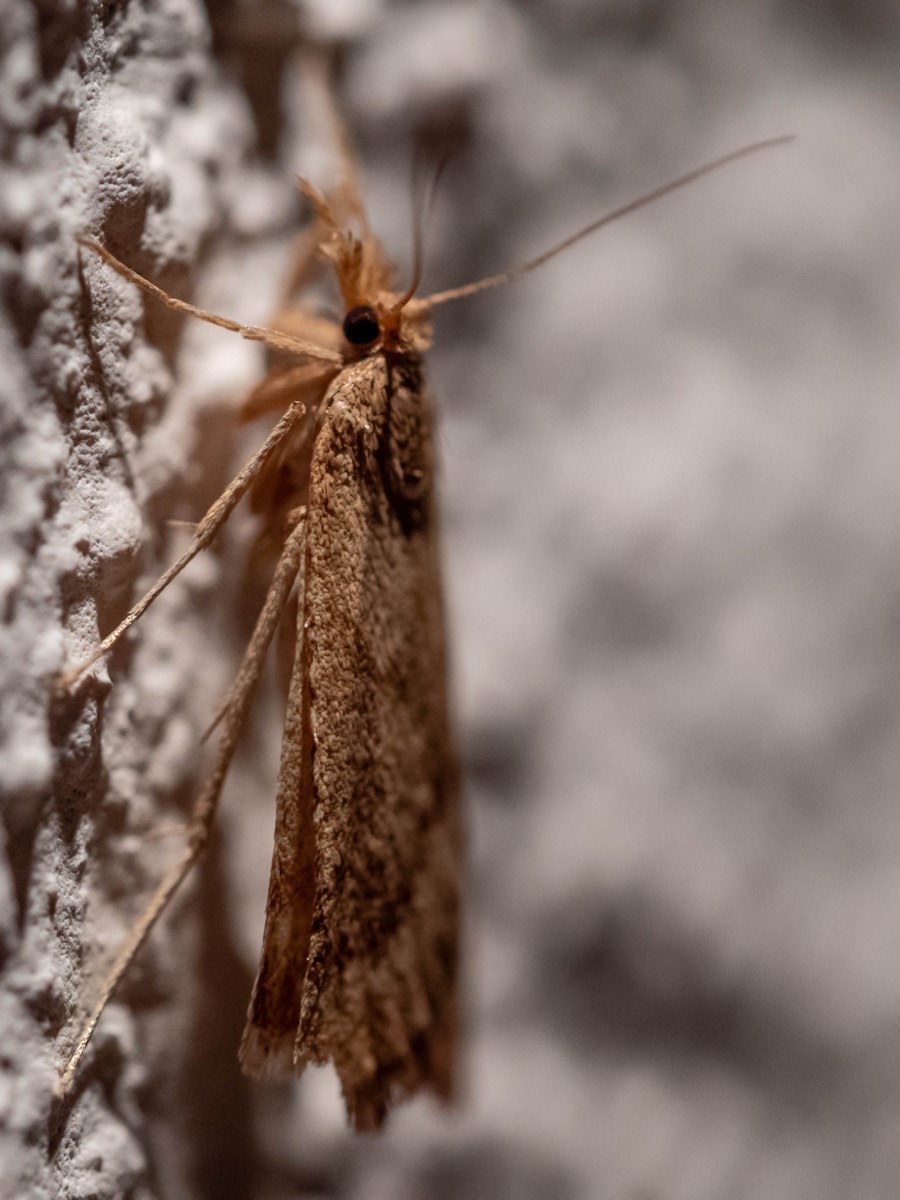CRAMBIDAE – THE GRASS MOTHS
The Crambidae are a family of Lepidoptera, often referred to as “crambid moths” or “grass moths”. They include a large number of night-flying moth species with a wide variety of sizes, colors, and wing patterns. The forewings of crambid moths are usually narrower and more elongated than those of other moths, often bearing subtle markings. The caterpillars of some species feed on cultivated plants and can damage crops. Other larvae in this family inhabit various environments and feed on a wide range of host plants. Crambidae have a global distribution and occupy diverse ecosystems, from meadows to wetlands and forests.
- Pyrausta aurata – Mint Moth
- Cydalima perspectalis – Box Tree Moth
Characteristics
- Small to medium-sized moths (wingspan 15–35 mm)
- Narrow wings, often held roof-like when at rest
- Variable coloration: pale brown, cream, ochre, white, sometimes metallic
- Fine wing venation, sometimes translucent
- Fast, low flight among grass species
Habitat
Crambidae are found in:
- Grasslands, dry meadows, fallows, cultivated fields
- Wetlands, reed beds, ditches, marshes
- Hedgerows, roadsides, gardens
- Crepuscular or nocturnal activity, sometimes diurnal
Biology
- Eggs laid on grasses, rushes, reeds, nettles, mints, etc.
- Diverse larvae: borers, silk spinners, free-living or aquatic
- Some live between folded leaves, others inside stems or water
- Pupation in a discreet cocoon on the ground or within the host plant
- Several generations per year for the most common species
Common genera and species
- Crambus, Agriphila, Catoptria – Grass-dwelling, low-flying, narrow wings with longitudinal patterns
- Udea, Evergestis – Common in gardens, feed on broadleaf plants or brassicas
- Pyrausta – Small, colorful diurnal moths (purple, gold)
- Nymphula, Elophila – Aquatic species (larvae on reeds, water lilies…)
Notable species
- Crambus perlella – White with pearly sheen, low flyer in lawns
- Agriphila tristella – Golden-brown wings, frequent in summer
- Pyrausta aurata – Small purple and gold moth, active during the day
- Elophila nymphaeata – Aquatic species, larvae feed on water lily leaves
Special features
- Often abundant but discreet group, hard to identify from photos
- Some species have aquatic larvae (rare among Lepidoptera)
- Characteristic low flight in dry grasslands
- Some species are considered agricultural pests (e.g. on corn, rice, etc.)



